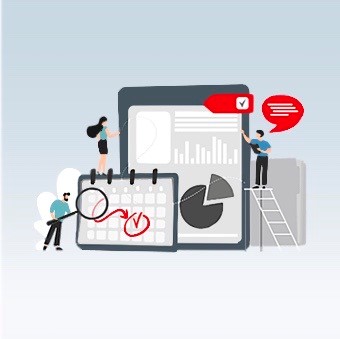How To Reach More Consumers With Effective Email Marketing
How To Reach More Consumers With Effective Email Marketing
So you’ve been sending out emails regularly and maybe even more with the COVID-19 situation worldwide to update your existing customers and reach out to potential ones. But you are getting far less response than expected. In times of a pandemic where consumer confidence is shaken, how do you stay connected with your customer base with more effective emails?
Studies have proven that for every $1 spent, email marketing generates an average of $42 in ROI. Unlike other channels, email marketing reaches consumers where they visit every day — their inbox.
But of course, you have to give them a reason to open the emails. The data you have comes in useful here. Track your performance with open rates and click-through rates, and use A/B testing to optimise your email marketing strategy further.
In light of the current COVID-19 pandemic, it is especially crucial for SMEs to activate their business continuity plans and ensure that they remain in touch with their consumers effectively.
Here are common reasons why people might not open your emails.
1. Lack of personalisation in emails
From the view of the receiver, personalisation makes a significant difference. Customise your greeting and subject lines to include the individual names of your customers — your email will stand out and be more likely to be opened.
Perhaps go one step even further, and customise the information within for that particular user, whom you’ve noticed to have certain preferences for travel, for example, and include a personalised call to action.
2. Non mobile-optimised layouts and visuals
An email’s looks can make all the difference. We are in an age of shortening attention spans after all. With 81% of people opening emails on their smartphones than tablets today, having your emails mobile-optimised is crucial. So it’s important to test — do so with any email marketing software like MailChimp, Campaign Monitor or Shopify.
Visuals are another way to draw the reader in and keep them engaged. However, emails that are too aggressive with visuals might turn readers off instead.
Moderation is key. Use appropriate visuals only where they add value. For easily digestible information, try using diagrams. Adding headers in your email can also enhance readability.
3. Frequency
Just because you have subscribers, does not mean you can bombard them with messages all day. Work out a schedule instead. Your customers know when to expect an update from you, and with a clear content calendar, you’re also able to better plan your emails without sending out repetitive information.
Data suggests that every two weeks is the optimal frequency to increase email views. However, there are no universal truths. Use data analytics for better insights regarding your consumer base.
Disclaimer
You may be directed to third party websites. OCBC Bank shall not be liable for any losses suffered or incurred by any party for accessing such third party websites or in relation to any product and/or services provided by any provider under such third party websites.
The information provided herein is intended for general circulation and/or discussion purposes only. Before making any decision, please seek independent advice from professional advisors. No representation or warranty whatsoever in respect of any information provided herein is given by OCBC Bank and it should not be relied upon as such. OCBC Bank does not undertake any obligation to update the information or to correct any inaccuracy that may become apparent at a later time. All information presented is subject to change without notice. OCBC Bank shall not be responsible or liable for any loss or damage whatsoever arising directly or indirectly howsoever in connection with or as a result of any person acting on any information provided herein. Any reference to any specific company, financial product or asset class in whatever way is used for illustrative purposes only and does not constitute a recommendation on the same.
Discover other articles about:



